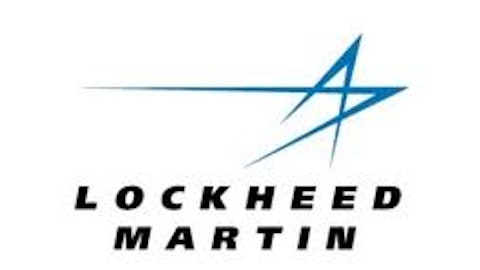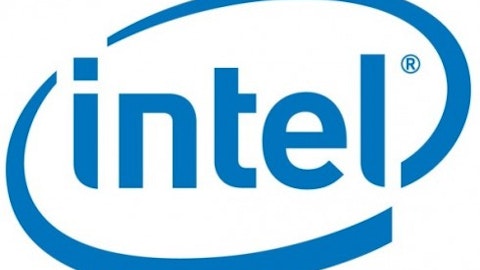On Tuesday, defense and aerospace conglomerate Textron Inc. (NYSE:TXT) won an enormous $640.8 million contract modification, which expanded upon an existing firm-fixed-price contract to supply 1,300 cluster bombs to the U.S. Air Force. As it stands, this formalizes a contract first announced in 2010, with at least some of those units to be used by the Royal Saudi Air Force.
As fellow Fool Rich Smith pointed out, this might seem troubling on the surface considering traditional cluster bombs are understandably frowned upon all around the world, thanks primarily to their generally wide-reaching, imprecise destructive effects that not only lead to greater-than-average civilian casualties but also tend to leave hard-to-find unexploded ordnance on the battlefield.
And I would know: Before I joined the Fool, I actually worked for a division of Textron Inc. (NYSE:TXT) Systems for nearly seven years after graduating from college. While our small software development office had no direct influence on Textron Inc. (NYSE:TXT) Defense Systems’ munitions programs, part of my work there involved trying to tackle the difficult task of remotely identifying such unexploded ordnance for cleanup purposes.
Why so expensive?
For those of you keeping track, Textron Inc. (NYSE:TXT)’s win dwarfs even the $308 million contract modification awarded to Lockheed Martin Corporation (NYSE:LMT) just last week for 244 hit-to-kill PAC-3 defense missiles or, as they’re more popularly known, “Patriot” interceptor missiles.
Considering the complicated software and aerial maneuvers Lockheed Martin Corporation (NYSE:LMT)’s Patriot missiles must undertake to complete their task of intercepting ballistic missiles, cruise missiles, and hostile aircraft, their price at more than $1 million apiece isn’t all that hard to digest.
But as Rich also pointed out, simple arithmetic with the aforementioned Textron Inc. (NYSE:TXT) contract shows the price for its cluster bomb units also comes to a whopping $492,923 each.
Why so much?
Because these aren’t ordinary cluster bombs. To be specific, this deal involves Textron Inc. (NYSE:TXT)’s CBU-105 munitions, a high-altitude variant of the company’s CBU-97 Sensor Fuzed Weapon.

Textron’s CBU-105 Sensor Fuzed Weapon, Image source: Textron
Here’s why Textron’s cluster bombs are different
So what makes the CBU-105 so special?
In contrast to the random spreading of smaller impact-detonated bomblets dropped by traditional cluster bombs, the CBU-105 actually performs its own series of spectacular aerial maneuvers to systematically seek out and destroy up to 40 targets over an area as large as 30 acres.
So how’s it work?
First, the bomb sheds its outer shell, sending out 10 spinning canisters (or BLU-108 submunitions, pictured below), each of which contains several hockey puck-sized munitions. Or, as Textron calls them, “skeets.”

Textron’s BLU-108 submunition, Image source: Textron
Next, the canisters release the skeets, which themselves use fins to steer outward as each deploys its own parachute.
Then, using both a laser sensor to measure distance and location, along with two infrared sensors that have been pre-programmed to search as they float down for fixed or moving targets meeting a specific set of IR requirements, each individual skeet identifies a target.
Once the target is found — let’s say, for instance, a tank — the skeets use a directed charge to propel themselves downward, penetrating the tank’s outer armor and exploding inside.
If a target isn’t found — and this is key to the heated cluster bomb debate — the skeets either detonate in the air or self-destruct after a preset time interval on the ground, leaving no unexploded ordnance behind on the battlefield.
If this seems like something straight out of Iron Man, remember the BLU-105 isn’t even that new. In fact, it was first used quite effectively during Operation Iraqi Freedom back in 2003, and was featured on the hit show Future Weapons in 2008.
Foolish takeaway
In the end, don’t forget defense systems aren’t Textron Inc. (NYSE:TXT)’s only business. Among its other subsidiaries are Bell Helicopter, Cessna, EZ-GO, Jacobsen (think lawn mowers), Greenlee hand tools, and AAI, the maker of the Shadow unmanned aerial vehicle.
As a result, while my own position in Textron remains small, it’s hard to claim the stock is overvalued while trading at just 14.9 times last year’s earnings and 11.5 times next year’s estimates — especially now that the company is no longer overexposed to the threat of its troublesome financial segment, which almost singlehandedly proved Textron’s undoing when the market hit the fan back in 2009.
Now, however, thanks to big contract wins with innovative products like the BLU-105, I’m convinced investors are left with a solidly profitable business that is positioned for decent growth down the road.
The article Textron’s Cluster Bombs Are Anything But Ordinary originally appeared on Fool.com and is written by Steve Symington.
Fool contributor Steve Symington owns shares of Textron. The Motley Fool owns shares of Lockheed Martin and Textron.
Copyright © 1995 – 2013 The Motley Fool, LLC. All rights reserved. The Motley Fool has a disclosure policy.



